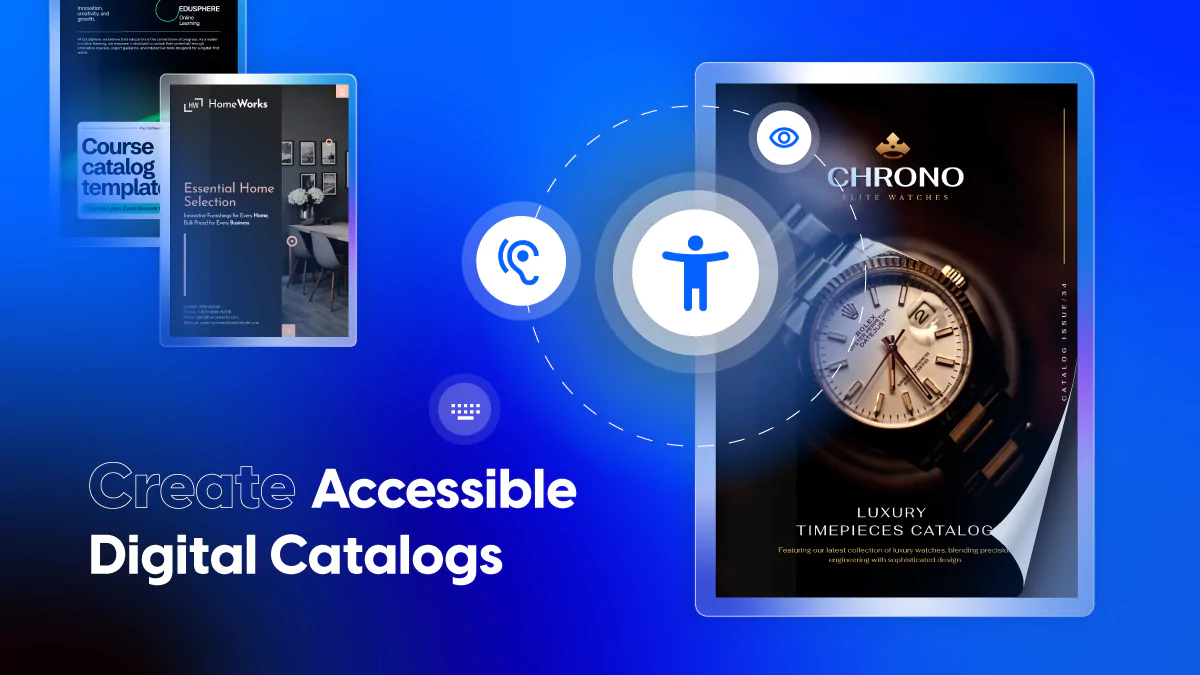How powerful are e-catalogs? A 2019 study
I recently read an article on Adweek with this headline: Ikea’s Furnishings Vanish in These Subtly Smart Ads About the Catalog Moving Online. It was about their new ad campaign promoting the catalog going entirely digital.
Switching from print to digital catalog is quite a big shift for a brand like IKEA that focused so much on marketing its furniture through stunning printed catalogs.
It’s a decision that marks more than 50 years of catalog distribution through which, the gigantic furniture seller reached over 2 million Danish households.
And I know what you are going to say. It’s all part of this environmental trend that capitalizes on living a more sustainable and conscious life. So, it only makes sense for big catalog publishers like IKEA deciding not to print that many catalogs. Well, not only that. Because the IKEA catalog is still being printed in more than 200 million copies worldwide, being one of the most-distributed books alongside the Bible and the Koran. Shocking?
If you think about it, no. People are in love with the feeling of flipping through the pages of the IKEA catalog and then going in-store to look for the items they carefully bookmarked. Myself included. And so, it’s going to take time until IKEA ends the printing catalog era.
But there are so many ways in which people consume content nowadays that it only feels natural for some brands like IKEA to also publish its content digitally. Or exclusively there.
E-Catalog’s impact on sale conversion and online engagement
Here at Flipsnack, we are very passionate about catalogs. Especially digital ones. This is why we conducted a more in-depth analysis of how our users choose to invest time, effort and money into publishing online catalogs.
The aim of our analysis was to measure e-catalog’s impact on sale conversion and online engagement. So, we asked 1000 of our premium users why they chose to publish their catalogs online and the benefits of doing so.
Curious to find out more insightful information? Keep on reading.
We asked 1000 of our users about the impact of e-catalogs in 2019
For the first part of our research, we wanted to find out more about why people were choosing to create catalogs online and whether they were seeing anything different.
The main reason for publishing a catalog, printed or online has a lot to do with increasing sales. But, not only. Creating and publishing a catalog needs to firmly put your brand out there. To put it in other words, catalogs need to have the ability to bring customers in your store, physical or virtual and be aware of your brand. So, we can say that the main reasons for publishing a catalog are to present products, increase brand awareness and eventually sell more. So, it’s all pretty straightforward at this point.
When we asked Flipsnack users about the main reasons for publishing an online catalog, we got some interesting answers. Some of them predictable and some of them… not so much.
When it comes to accessibility, online catalogs are a must!
It comes as no surprise that our users prefer to upload their catalogs online on Flipsnack mainly because of this feature.
It’s much easier to send beautiful looking catalogs to potential clients than to send newsletters with a boring looking PDF file. Boring? Because one of the main benefits of publishing an online catalog is exactly this: you can easily make it interactive and fun to flip through. But more on interactivity, later.
As you can see in the chart below, one of the main reasons why our premium users choose to publish e-catalogs is because of online exposure. The possibility of reaching potential new markets.
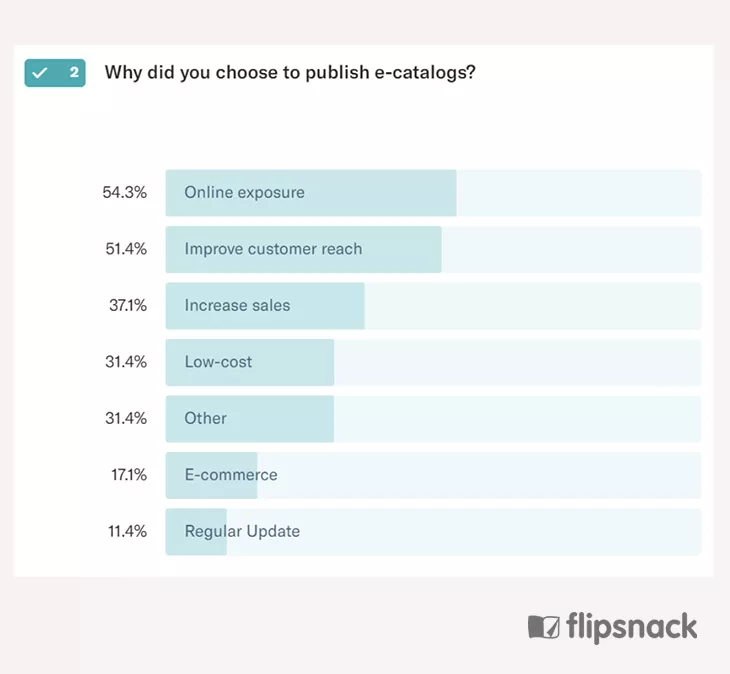
Print vs digital. War or coexistence?
With print catalogs, one of the main downfalls is that in order to reach new audiences, you’d have to think about a pretty solid catalog circulation strategy. And probably depend on a catalog distribution agency. Therefore, the printing and distribution costs of doing this can get quite high.
But with e-catalogs, reaching new audiences and improving customer reach is easier than ever.
When asked if they also have a printed version of their catalog, 48,6% of the premium users involved in this research replied affirmatively. While the other 51,4% replied that they don’t.
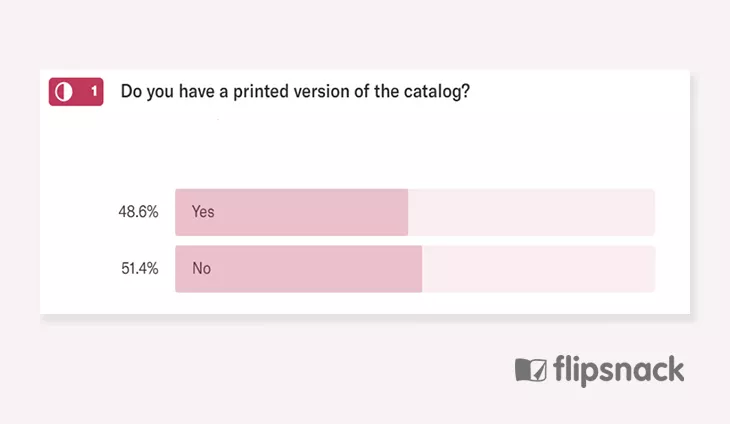
Now, just like IKEA, it seems like the majority of our premium users took a shift to digital. But, for some markets, it still makes sense to print out catalogs and distribute them classically.
Even if print advertising has dramatically decreased over the past few years, sending out your catalogs via post mail might actually be a good exposure strategy. Yes, you read that correctly. Let’s just put it this way. There is so much noise in the digital space in these competitive days of 2019 that it might be easier for your brand to stand out via print. Think about getting your weekly ads circular in the mail and actually paying attention to it. Because there is something special about the smell and feel of printed pages that make us pay closer attention.
In 2015, a study conducted by The U.S. Postal Service Office of Inspector General (OIG) worked with Temple University’s Center for Neural Decision Making showed that if short on time, digital advertising can capture the attention quicker. However, for a long-lasting impact, tactile marketing could make more of an impact when it comes to purchasing intent.

E-catalogs distribution
See below our users’ preferred methods of distributing e-catalogs.
And the winner is … the good old email! Results tell us that the most efficient way to reach your audience is through email. It may come as a surprise for many, but the good old email is still one of the safest bets for marketers. It seems like for every $1 spent, email marketing generates $38 in ROI.
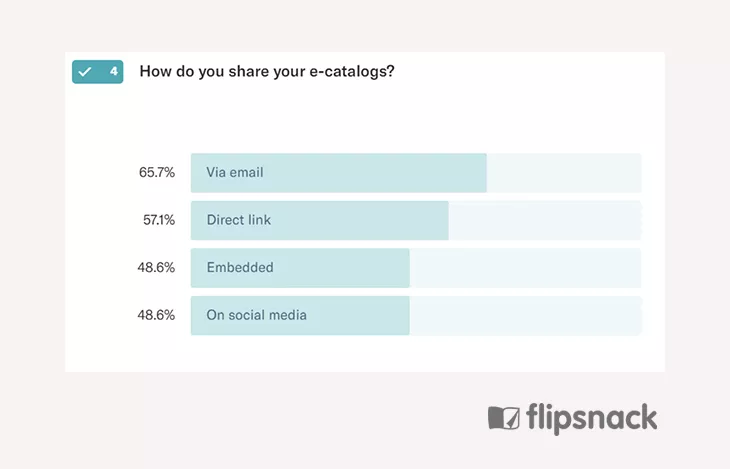
The runner up is the sharing through a direct link option, followed by social media and embed. An interesting fact about sharing e-catalogs via social media is that some of our users use Whatsapp as a social medium to update customers with their latest catalog. Using Whatsapp to send out newsletters is actually one of this year’s major digital marketing trends.
Interactivity sells more
If there is something so nostalgic, still about the sound, feel and smell of flipping the pages of a catalog, the digital era brings an extra layer of interactivity to the good old catalog. Tactile marketing still matters but there is a new kid in town that should also be taken into consideration.
E-catalogs can be successfully used as e-commerce platforms. In comparison to print catalogs, adding shopping links and product tags make it one of the reasons why our premium users decided to publish online catalogs.

Shopping links are the strongest interactivity asset that e-catalogs can offer.
And it’s completely logical. This type of interactivity takes catalogs to the next level, making the add to cart process fast and smooth. And also, for retailers, it’s much easier to track the ROI of an e-catalog than it is in the case of a printed one. Not to mention customer behavior which is much easier to analyze.
The goal of any marketing strategy is to move customers forward. No matter their sale funnel state: from prospects to buyers, one-timers to repeat buyers or old customers reactivation. So, customer behavior analysis is crucial.
Measuring e-catalogs statistics
The question here is: what metric should a brand use to measure catalog performance? Brand exposure and overall revenue growth. But how do you measure brand exposure and sales growth after a printed catalog distribution campaign?
What brands usually do is take a representative group and track all customer spending during a catalog campaign. This method will provide insightful information if and only if a brand can find a solution to attribute sales to different marketing channels. Lost you already?
Hang in there, because when it comes to attributing sales coming from an online catalog, things get easier than with print. And it makes total sense to be this way.
I know what you might say. For many retailers, the purpose of publishing a printed catalog vs an e-catalog may be slightly different. Or at least, they can expect to have different results, based on the fact that these are two somehow different mediums.

Even if all brands do is have an online version of their catalogs, without even adding an interactivity layer, it makes it enough to easily track results. Statistics such as total number of impressions, views, shares, clicks on links, downloads and average time spent on catalogs. You can also take a look at data history, best performing catalogs, as well as the devices, sources and top countries from which your catalogs were viewed. Not to mention Google Analytics integration.
87% of the respondents to our survey replied that they are most definitely using links in their catalogs.
E-catalogs sell more than printed catalogs?
At first, one may be inclined to say yes. But you see, this is a question that many marketers find it hard to answer. Mainly because, as mentioned above, print catalogs and e-catalogs can be used for different purposes. Or reaching out to different audiences. But even so, it’s very hard to quantify if e-catalogs have more of an impact on sales than printed catalogs.
For now, let’s see what our premium users replied.
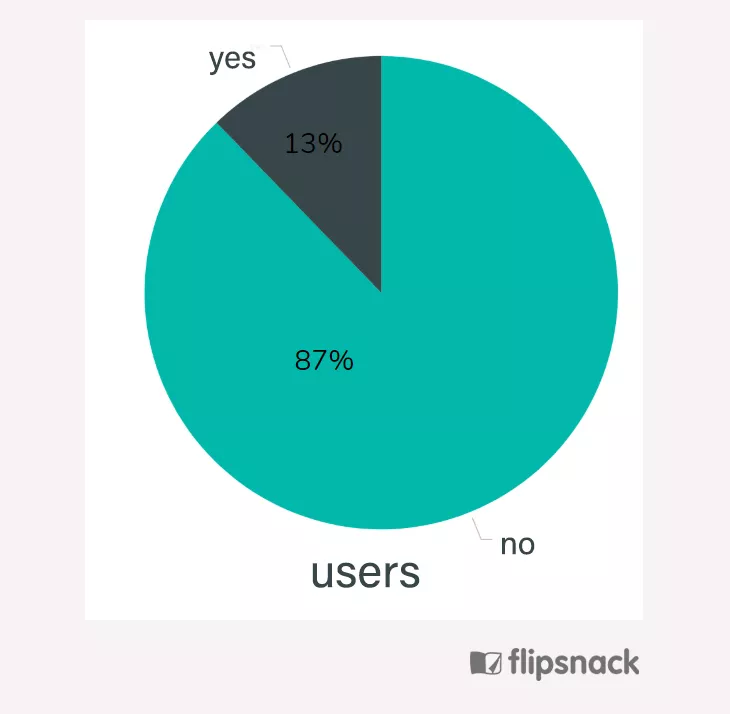
Do e-catalogs help you increase sales? More than 65% of our respondents replied affirmatively.
And for some of them, it’s an increase by up to 50%. Crazy right?
But the magic of going digital with your catalog has a lot to do with the ease of tracking results in comparison to print. We may see a correlation between e-catalogs and client activation, whatever that means, moving the client further in the sales funnel but the main aspect of it is, I think, the fact that you can actually track those results easily and accurately.
Even if the main goal of many of our respondents is to sell more, the chart below will show an interesting fact: the main reason for publishing an e-catalog is to present new products. This takes us back to the first point of this article that states online exposure as being the main factor brands use e-catalogs in their marketing mix.
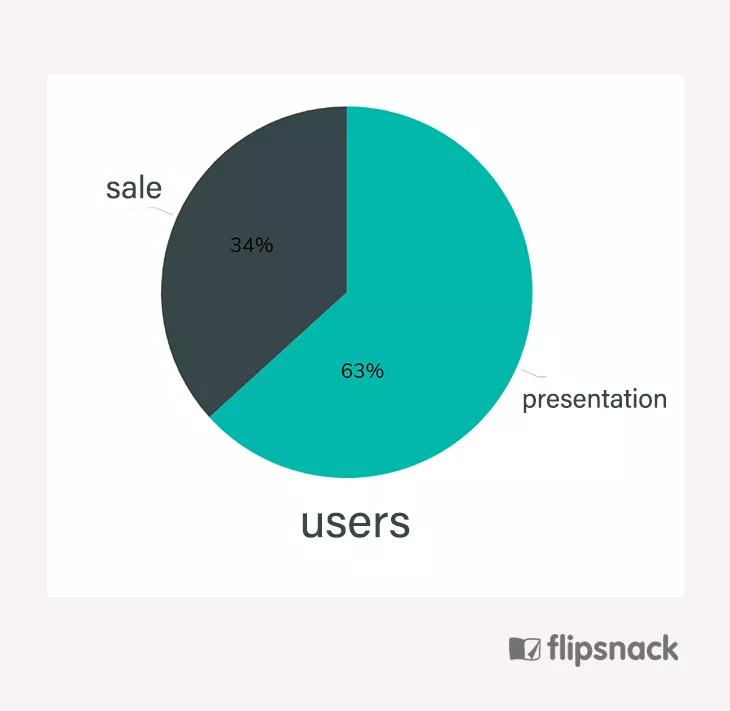
Conclusion
It was very interesting for us, here at Flipsnack to see why and how our premium users are using e-catalogs in their marketing mix. In 2019, going digital with your catalog is a must. If brands like IKEA or H&M are making a total shift towards digital, it means that it’s time. Time to step your game up and capitalize on the benefits of online catalog publishing.

